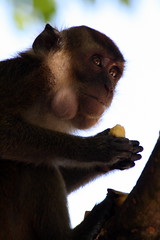There is a story about a cage of monkeys. In the middle of the cage is a ladder and at the top of the ladder is a banana.
One of the monkeys climbs the ladder to get the banana, but as he reaches for it, the entire cage becomes electrified and all the monkeys get a sharp shock.
Another monkey climbs the ladder, with the same result.
After a few attempts, the monkeys learn that climbing the ladder means everyone gets a shock, and they don’t try it again.
After a few days, one of the monkeys is replaced with a new monkey. This new monkey sees the banana and moves towards the ladder. The other monkeys, not wanting to be shocked, leap on him and beat him up. The new monkey attempts to go for the banana a few more times, before learning that going for the ladder means that the other monkeys will beat him up.
Over time, each of the original monkeys are replaced with new monkeys. Each new monkey learns the lesson that going for the ladder means getting beaten. Eventually, there are no monkeys who ever experienced the shocks. The electric shock equipment is then switched off. Still, no monkey ever climbs the ladder, for fear of being beaten up.
Unfortunately, monkeys are unable to ask “Why do you beat me up when I go for the banana?”, but if they could, the other monkeys would probably say “That’s just the way we do it here”.
Sometimes, our processes are based on a situation that no longer exists (like the inactive shock equipment). Sometimes, people we ask “Why do we do it this way?” won’t be able to provide an answer. Sometimes, we’ll try doing something different and we’ll get the banana and sometimes we’ll get a shock. Either way, we learn something.
I’m going to do something different today. Are you?
The monkey story is not mine, I think I came across it in an NLP book. There are plenty of examples on the web
